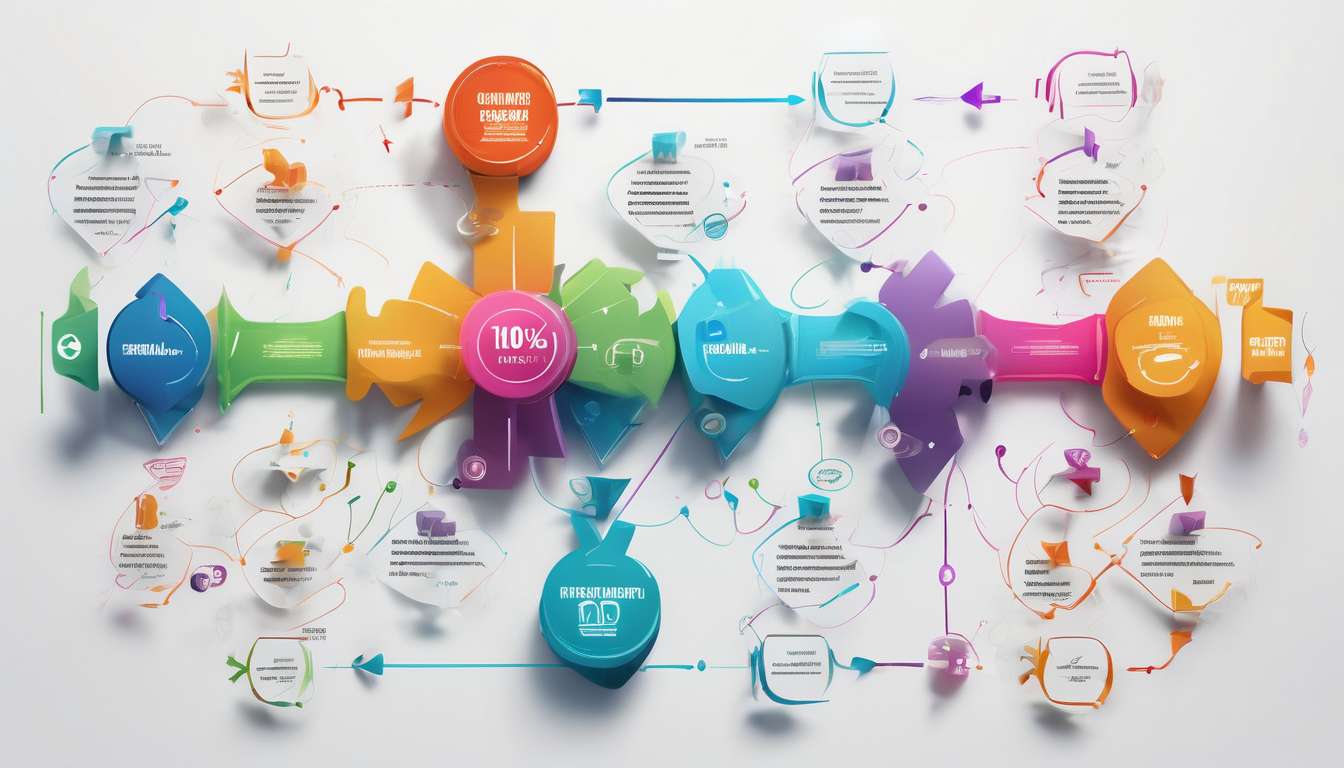When it comes to understanding odds, we often find ourselves staring at numbers that seem to speak a language all their own. As a collective, we understand the importance of deciphering these figures, whether we’re placing bets, analyzing statistics, or simply trying to make informed decisions in our everyday lives.
In our journey to demystify odds, we’ve compiled the ultimate checklist: 10 Steps to Interpret Odds. Together, we’ll explore the nuances behind these numbers, breaking down complex concepts into manageable insights that we can all grasp. By following these steps, we aim to bridge the gap between confusion and clarity, empowering each of us to approach odds with newfound confidence.
Whether we’re seasoned pros or curious novices, this guide is crafted for anyone eager to enhance their understanding. So, let’s embark on this educational adventure together and transform the way we perceive and interpret odds in various aspects of life.
10 Steps to Interpret Odds:
-
Understand the Basics of Probability
Learn how probability forms the foundation of odds. -
Differentiate Between Types of Odds
- Fractional Odds
- Decimal Odds
- Moneyline Odds
-
Convert Odds to Probability
Simplify odds into straightforward probabilities to better understand the likelihood of an event. -
Learn to Read Fractional Odds
Get comfortable with interpreting fractional odds, commonly used in some regions. -
Practice with Decimal Odds
Know how to work with decimal odds, often favored for their simplicity. -
Familiarize with Moneyline Odds
Master the interpretation of moneyline odds, frequently used in American sports betting. -
Calculate Potential Payouts
Use odds to calculate potential winnings and make informed decisions. -
Understand Implied Probability
Translate odds into implied probability to gauge the bookmaker’s perspective. -
Identify Value Bets
Recognize when the odds offer good value and make strategic bets. -
Stay Informed and Practice Regularly
Keep updated with trends and practice regularly to sharpen your skills.
By following these structured steps, you can enhance your ability to interpret odds, leading to more informed decisions in various contexts.
Probability Basics
Probability basics form the foundation for understanding how likely events are to occur. As a community eager to grasp these concepts, we can dive into the world of probability and odds together.
Probability is the measure of the chance that a particular event will happen, expressed as a number between 0 and 1:
- 0 means the event is impossible.
- 1 means the event is certain.
Odds, on the other hand, compare the likelihood of the event occurring to it not occurring.
Converting between odds and probability involves translating two ways of expressing the same information:
- For example, if the probability of an event is 0.25, the odds can be represented as 1 to 3.
This conversion helps us communicate and understand these chances in different contexts, whether we’re talking about sports, weather, or any event we’re interested in.
By mastering these basics, we strengthen our ability to discuss and analyze events, fostering a sense of unity and shared understanding within our group.
Odds Types Overview
Let’s explore the diverse types of odds that enrich our understanding and application of probability in various scenarios. We often encounter three primary types: fractional, decimal, and moneyline odds. Each type offers its own perspective, helping us feel part of a community that thrives on strategic insights.
Fractional Odds
- Commonly used in the UK and Ireland.
- Express a ratio of profit to stake.
- For example, odds of 5/1 mean for every $1 wagered, we’d earn $5 if successful.
Decimal Odds
- Prevalent in Europe.
- Simplify calculations by showing total returns per unit staked.
- With odds of 6.0, it includes our stake, yielding $6 for every $1 bet.
Moneyline Odds
- Favored in the US.
- Use positive and negative numbers to indicate underdogs and favorites.
- A +500 suggests a $500 profit on a $100 bet.
- A -200 means we’d need to wager $200 to win $100.
Understanding these odds helps us seamlessly navigate probability and engage confidently in diverse betting environments.
Probability Conversion
Understanding Odds and Probability Conversion
Converting various odds into probabilities is essential for making informed decisions based on clear, numerical insights. Understanding this conversion is crucial when we aim to connect with others over shared interests or activities involving odds. By mastering this skill, we can foster a sense of community and confidence in our discussions.
Concept of Odds vs. Probability
- Odds represent the chance of an event occurring versus it not happening.
- Probability offers a more straightforward percentage.
Formula for Conversion
To convert odds into probability, we use the following formula:
[ \text{Probability} = \frac{\text{Odds}}{1 + \text{Odds}} ]
This formula is designed for decimal odds.
Example Calculation
- If we have odds of 3.0, the probability calculation would be:
[ \frac{3.0}{1 + 3.0} = 0.75 ]
which translates to a 75% probability.
Isn’t it empowering to transform these numbers into something we all understand?
Benefits of Mastering Conversion
By grasping odds and probability conversion, we can:
- Enhance our ability to predict outcomes accurately.
- Become more insightful participants in conversations and decision-making processes.
Together, let’s continue to deepen our understanding and share these insights with our community.
Fractional Odds Mastery
Let’s dive into the world of fractional odds and unlock their potential in enhancing our decision-making skills. Together, we can master these odds, fostering a sense of belonging in communities that thrive on shared understanding.
Fractional Odds are often used in the UK and horse racing. They represent the ratio of profit to stake and are expressed as fractions, like 5/1, where we stand to gain £5 for every £1 wagered. This simple format helps us quickly gauge potential returns.
Converting Fractional Odds into Probability involves using the formula:
- Probability (%) = (Denominator / (Numerator + Denominator)) * 100
For example, for 5/1 odds, the probability is:
- (1 / (5 + 1)) * 100 = 16.67%
This conversion aids us in evaluating our chances and making informed decisions.
By mastering fractional odds, we’re not just improving our betting acumen; we’re joining a community that values precision and strategy. Let’s embrace this knowledge and enhance our collective understanding of odds and probability.
Decimal Odds Practice
Decimal Odds Overview
Decimal odds are a popular betting format that simplifies calculating potential returns. They represent the total payout rather than just the profit, making calculations straightforward.
Calculating Returns with Decimal Odds
To determine the return:
- Multiply your stake by the decimal odds.
Example: If you bet $10 with odds of 3.00, your total return would be $30 ($10 x 3.00).
Converting Decimal Odds to Implied Probability
To convert decimal odds into implied probability:
- Take the inverse of the odds.
Example:
- If the odds are 2.50, calculate 1/2.50.
- This results in an implied probability of 0.40 or 40%.
This conversion helps gauge the likelihood of an outcome, enabling informed decision-making.
Community and Skill Building
By practicing with decimal odds, we:
- Enhance our betting skills.
- Build a shared knowledge base.
This collective learning makes navigating the betting world more accessible and enjoyable for everyone.
Moneyline Odds Insight
Understanding Moneyline Odds in American Sports Betting
Moneyline odds are a common format used to represent the likelihood, or probability, of an event occurring in American sports betting. They also indicate the potential profit from a successful bet.
Types of Moneyline Odds:
-
Positive Odds (e.g., +150):
- These indicate the profit you would make on a $100 bet.
-
Negative Odds (e.g., -200):
- These show how much you need to bet to win $100.
Converting Moneyline Odds into Probability:
To better understand the implied likelihood of an outcome, converting moneyline odds into probability is essential. Here’s how:
-
For Positive Odds:
- Use the formula: Probability = 100 / (odds + 100)
-
For Negative Odds:
- Use the formula: Probability = -odds / (-odds + 100)
This conversion allows us to see beyond the numbers and grasp the implied probability of an event occurring.
Benefits of Mastering Moneyline Odds:
By mastering moneyline odds, you:
- Strengthen your connection with the betting community.
- Enhance your confidence and camaraderie as you engage in this thrilling world.
Understanding and utilizing these odds effectively can greatly enhance your sports betting experience.
Payout Calculation Skills
Understanding Odds
Odds serve as a crucial component in determining both the potential winnings and the likelihood of an event occurring. Grasping this concept is essential for making informed betting decisions.
Payout Calculation Steps
To accurately calculate payouts from bets, follow these steps:
-
Convert Odds to Decimal Format: This simplifies the calculation process.
-
Calculate Total Returns: Multiply your stake by the decimal odds to determine your potential returns.
- Example: If you bet $100 on odds of 2.5, your potential return would be $250 ($100 x 2.5).
Probability and Odds
While odds can indicate the probability of an event, our primary focus is on using odds conversion for payout calculations.
Benefits of Mastering Payout Calculations
By developing these skills, you:
- Enhance your confidence in betting strategies.
- Strengthen your connection and experience within the betting community.
Conclusion
Mastering payout calculations not only boosts your betting skills but also fosters a deeper sense of belonging within the community of informed bettors.
Implied Probability Understanding
Understanding Implied Probability
Implied probability allows us to translate betting odds into the likelihood of an event occurring, helping us make more informed decisions. When we talk about odds, we’re really discussing probability in disguise. By mastering odds conversion, we can calculate how likely an event is to happen and unite with others who appreciate this shared knowledge.
Odds Conversion Basics
Odds represent the ratio of the probability that an event will happen to the probability that it won’t. To convert odds into implied probability, we use a simple formula:
- Decimal Odds: Implied probability is calculated as ( \frac{1}{\text{odds}} ).
- Fractional Odds: The formula is the denominator divided by the sum of the numerator and the denominator.
Benefits of Understanding Implied Probability
By understanding this conversion, we can:
- Spot value in bets.
- Join a community of savvy decision-makers.
- Calculate, analyze, and make predictions with confidence.
Together, we’re not just spectators; we’re informed participants in the game.
How do external factors influence the odds in sports betting?
External Factors Impacting Sports Betting Odds
External factors significantly impact sports betting odds. Key factors include:
- Weather conditions
- Player injuries
- Team morale
- Public sentiment
These elements can sway the odds in different directions.
Importance of Staying Informed
As a team, we must:
- Stay informed about these external factors.
- Analyze how each aspect influences odds.
- Make informed betting decisions based on this analysis.
Benefits of Understanding External Influences
By understanding how external elements influence odds, we can:
- Improve our chances of making successful bets.
- Enhance our overall betting experience.
Ultimately, staying informed and analytical about these factors is crucial for success in sports betting.
What are some common misconceptions about interpreting odds?
Common Misconceptions About Odds
When interpreting odds, it’s important to address some common misconceptions:
-
Higher Odds Mean Better Chances
Many believe that higher odds always indicate a better chance of winning. However, this isn’t necessarily true. -
Odds as Accurate Predictors
Another misconception is that odds are accurate predictors of outcomes. In reality, they are just probabilities.
Understanding the Nature of Odds
It’s crucial to approach odds with a balanced perspective:
- Odds can fluctuate based on various factors.
- They should not be relied upon solely for decision-making.
By keeping these points in mind, you can develop a more nuanced understanding of odds and their implications.
How do bookmakers set the initial odds for an event?
We set the initial odds by evaluating various factors such as team performance, player statistics, and historical data.
Our team analyzes all this information to determine the most accurate starting point for the odds. We aim to strike a balance between attracting bets and accurately reflecting the event’s likelihood.
Bookmakers work diligently to ensure our initial odds are fair and competitive in the market.
Conclusion
In conclusion, mastering the interpretation of odds is crucial for successful betting.
By understanding the basics of probability and the different types of odds, you can make more informed decisions. Whether it’s converting probabilities, calculating payouts, or grasping implied probabilities, this checklist of steps will set you on the path to becoming a skilled bettor:
- Understand the concept of probability.
- Learn the different types of odds: fractional, decimal, and moneyline.
- Practice converting probabilities into odds.
- Calculate potential payouts using different odds formats.
- Grasp the concept of implied probability.
- Develop a strategy for risk management.
- Stay informed about the sports or events you’re betting on.
- Keep track of your bets and analyze outcomes.
- Continuously educate yourself on betting trends and strategies.
- Practice responsible betting and set limits.
Keep practicing and honing your skills to enhance your betting experience and increase your chances of success.
Happy betting!




